“Are you taking a photo of the wall?” the pick-up driver who had pulled up beside us asked. “The wall? Er, no we are taking a photo of this irrigation channel,” I replied, following the man’s eyeline and realising that, standing perhaps half a mile from us, was probably the most controversial and highly devisive barrier on earth.
Terry and I manage to spot tiny lizards, rare birds and unusual insects from the saddle, but somehow we had completely missed the huge construction Donald Trump wants to extend all along the US/Mexican border.
“You can cycle down there and get a much better shot if you like?” the man added, a little bemused, so we did, although negotiating the sandy surface next to the channel while on a fully loaded touring bike was a bit tricky.
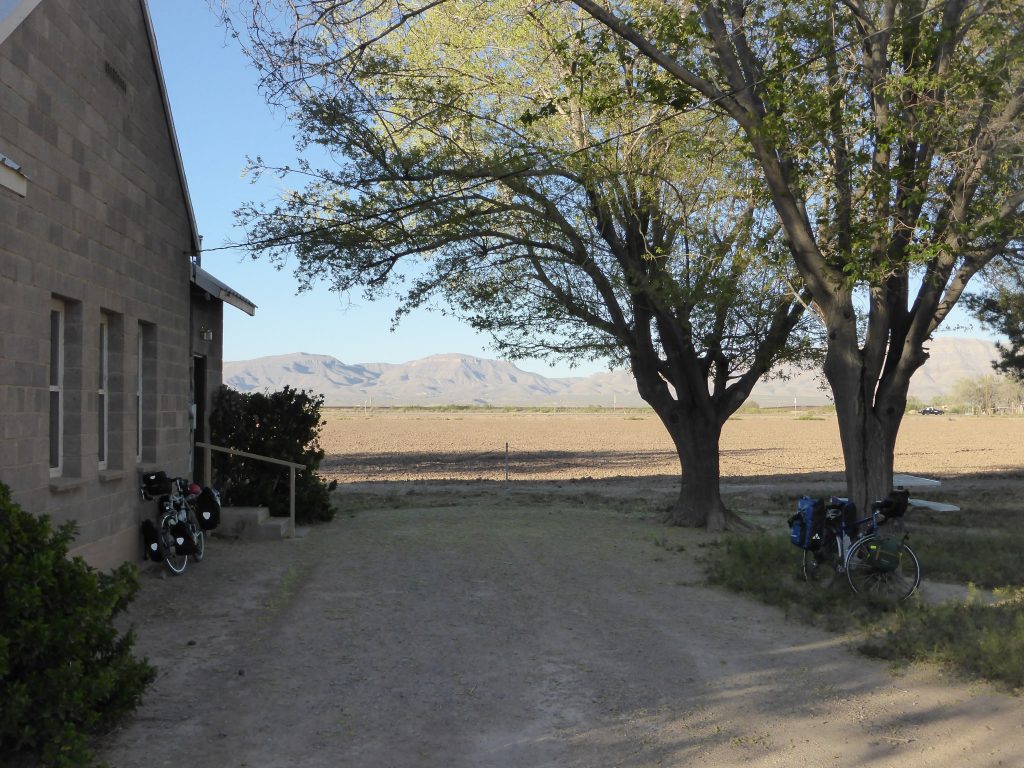
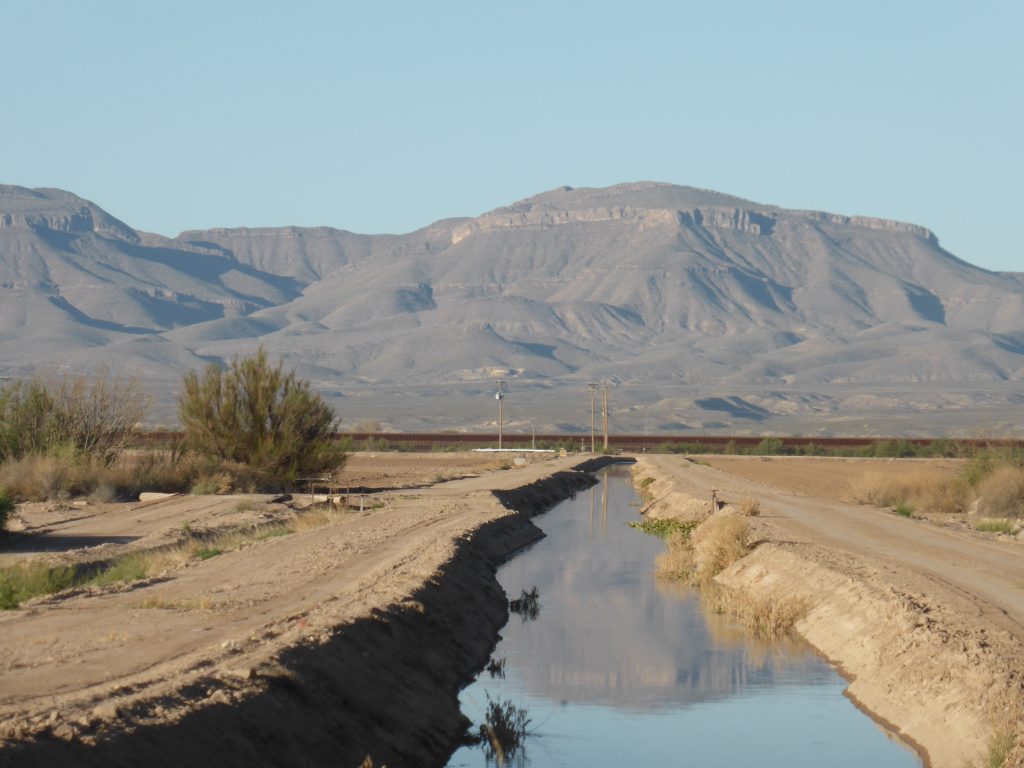
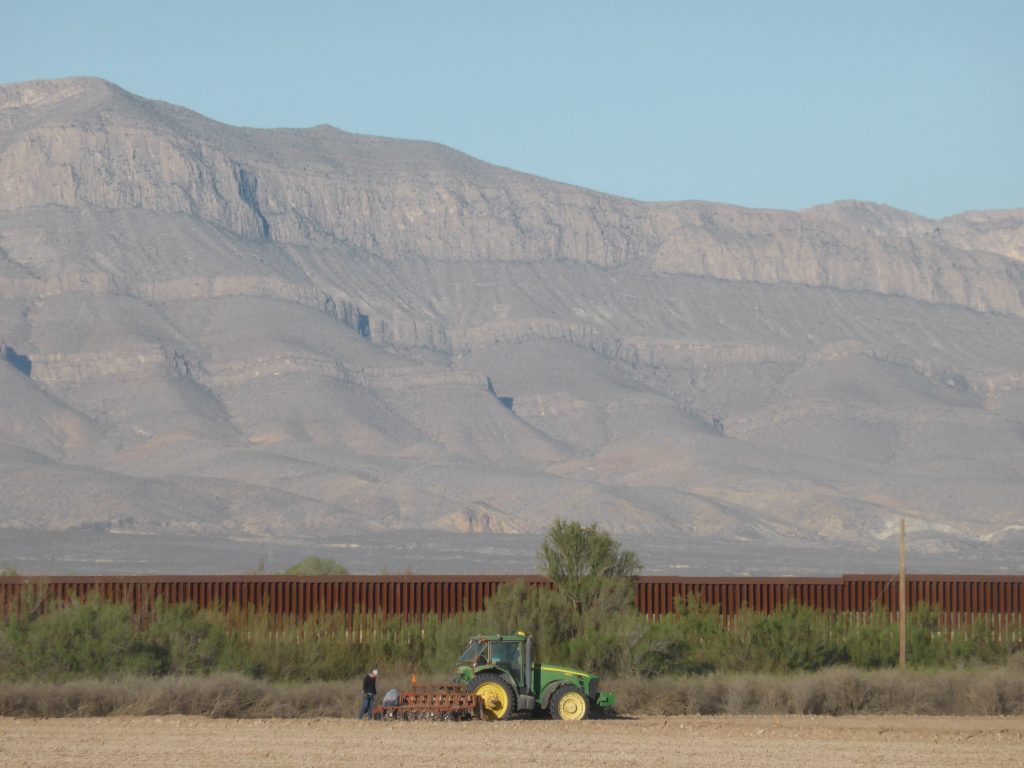
You’d have thought the mountains, the Rio Grande and various irrigation canals criss crossing the landscape would have been enough to deter migrants trying to get over the border, but apparently not. Obama had this section put up quietly several years ago apparently, and the local guy who’d stopped to talk to us, seemed indifferent to the whole thing.
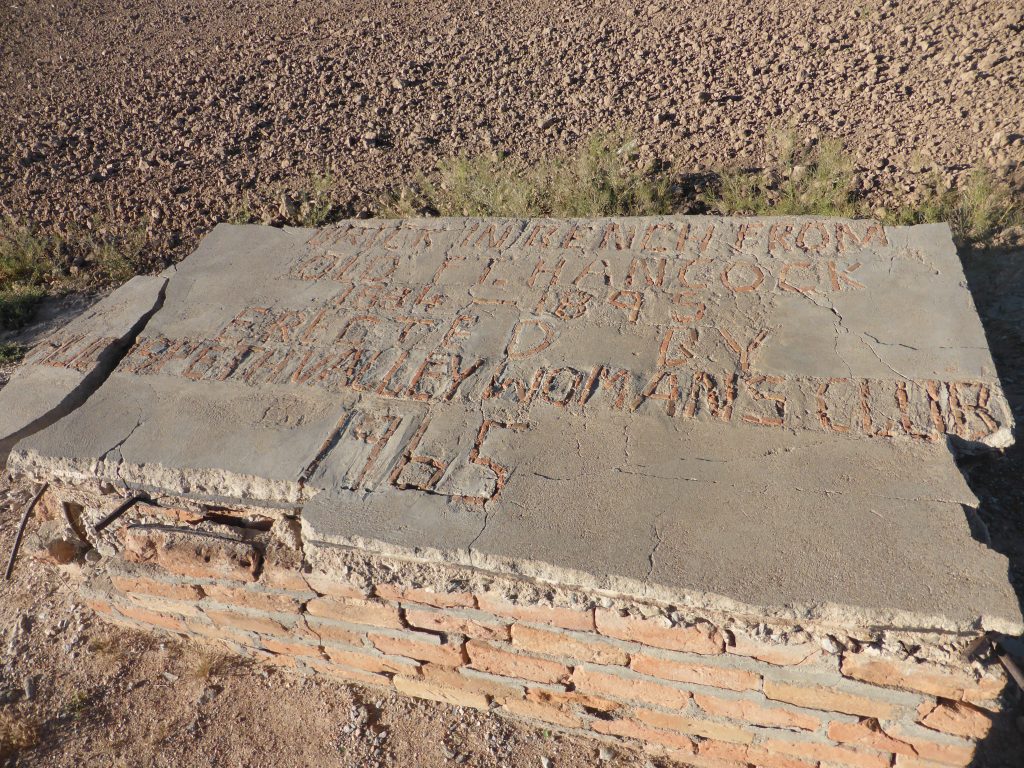
Shortly afterwards we stopped to look at the original site of Fort Hancock and then set off for El Paso. Almost immediately we were blown back again. After a few days of enjoying a tailwind this was clearly payback time and we were to spend the entire day battling against a full-on dust-blowing 30mph+ headwind that threatened to halt our progress altogether. For some reason, cycling into a headwind always makes Terry smile, so today he is grinning from ear to ear at the sheer futility of expending energy and getting nowhere.
Wall aside, it turned out that the floodplain we were following was managed by a sophisticated irrigation system in order to make it viably productive. Fed by the Rio Grande, the narrow strip of land between the mountains and the arid Texan desert, had green shoots of what looked like wheat, whole areas of recently ploughed land, alfalfa and endless miles of pecan plantations.
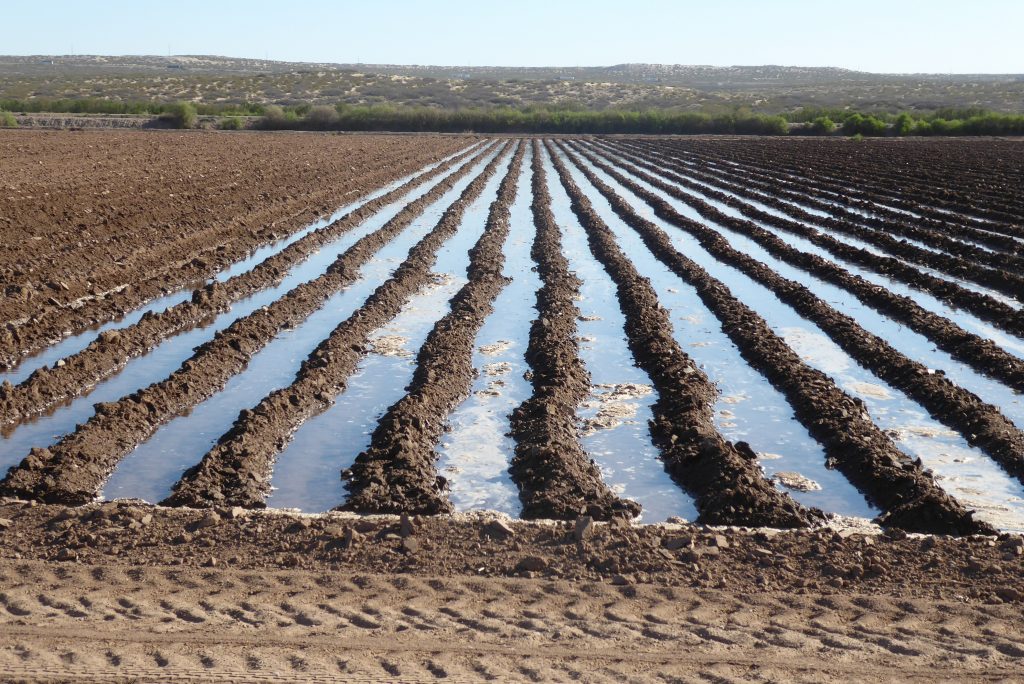
Pecans are big business here … both selling and buying. The water brings colour to this dry, nearly monochrome landscape … and life. The farmsteads again have goats, sheep, cattle or the occasional horse. The less visible animal life is evidenced by the return of the buzzards and scavengers circling in the wind. Watching a tractor kicking up great clouds of dust (Terry was forced to ride through Lawrence of Arabia style) showed how hard it was to maintain the top soil.
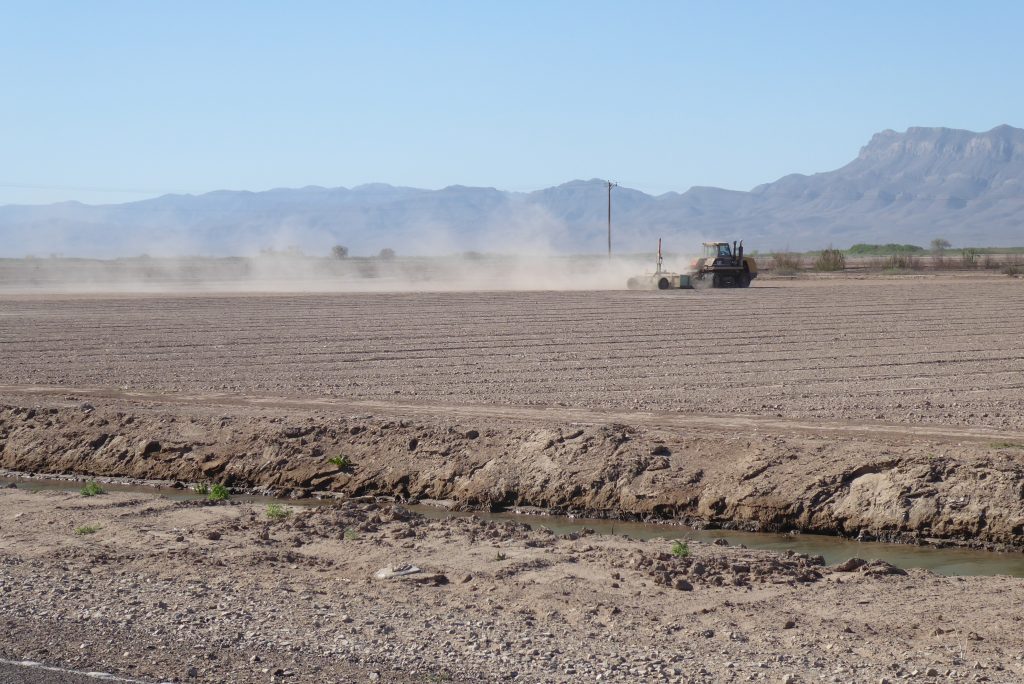
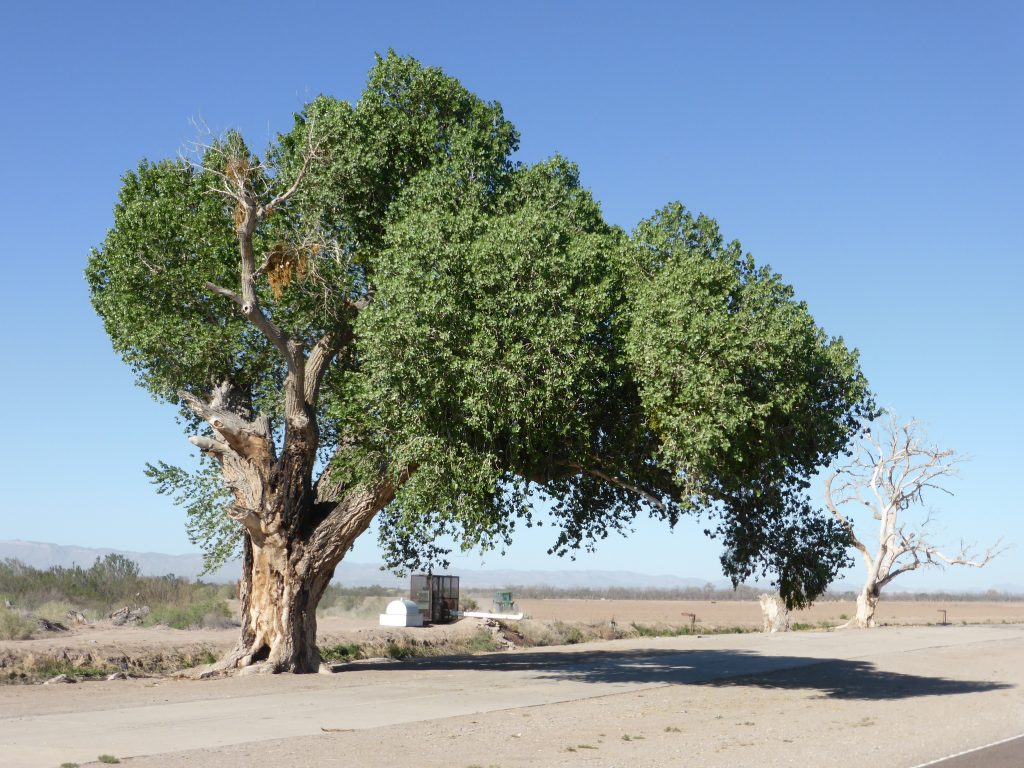
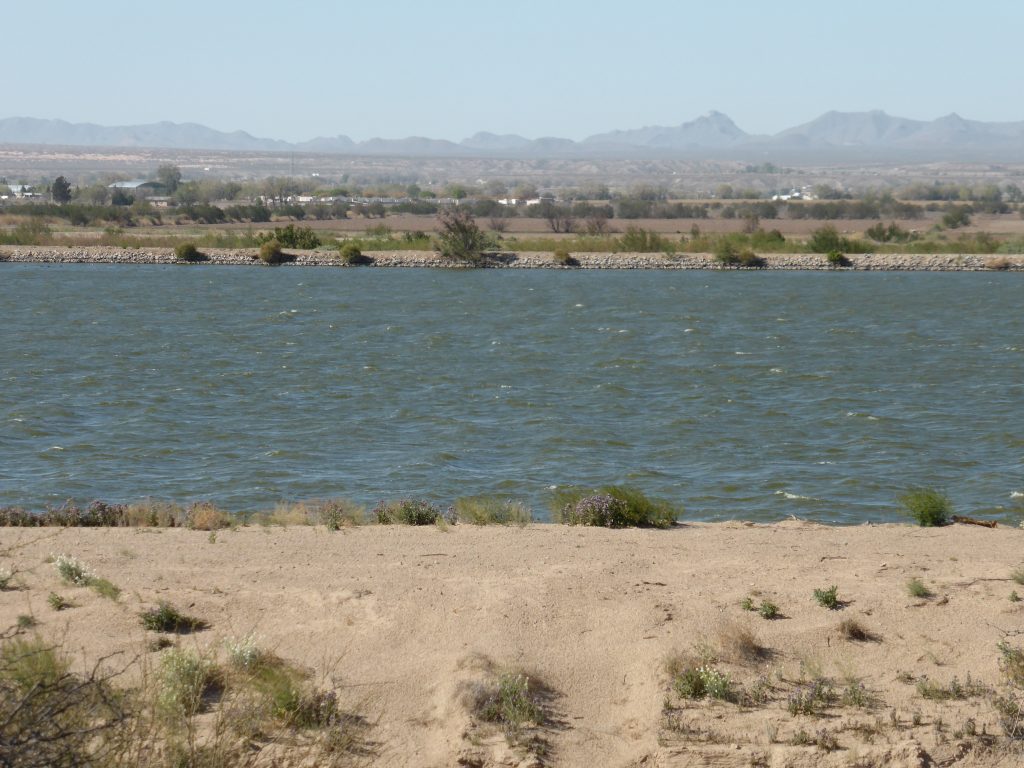
At one point we passed a large reservoir which we thought must be there to help to keep pressure in the system. It was attracting the lions share of the local bird population and at one point we saw a flock of ducks take off from a wide irrigation channel.
Also in the air were bees – although they were struggling in the wind too. Every now and then we passed a whole whack of hives … there are a lot of trees that need pollinating … and we were surrounded by the insects as they struggled to and from their hives. Terry, who knows a thing or two about bees, reckoned that the bee colonies must have been here since at least the 1900s as the government pumped money into this area back then to establish cotton as a crop. Evidently it was all going swimmingly until the Great Depression … and this area, like most of the rural south, hasn’t recovered since.
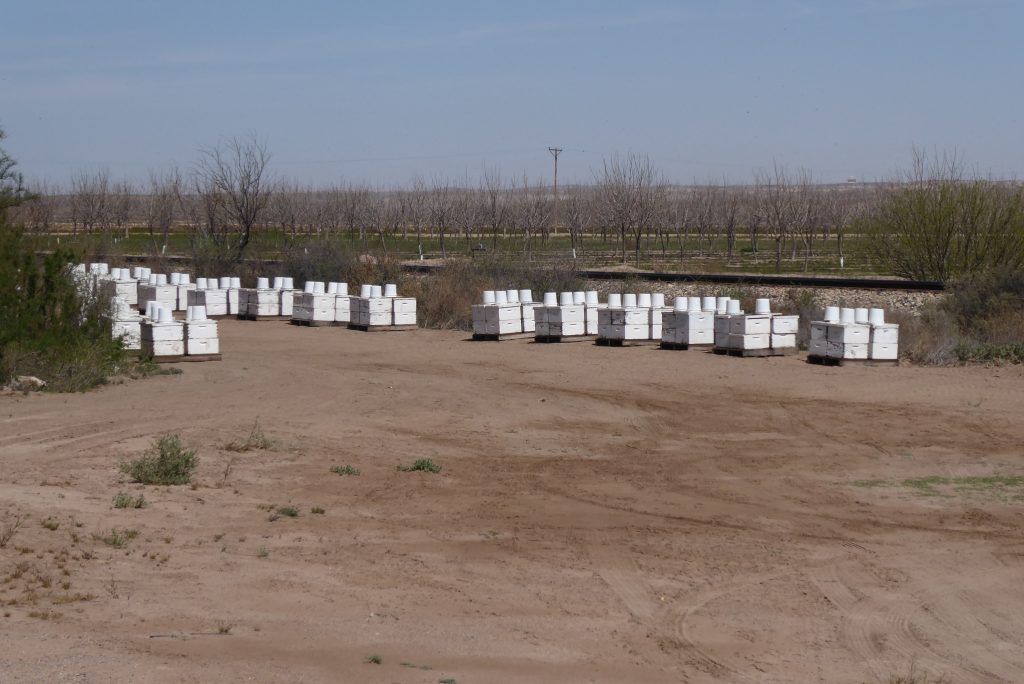
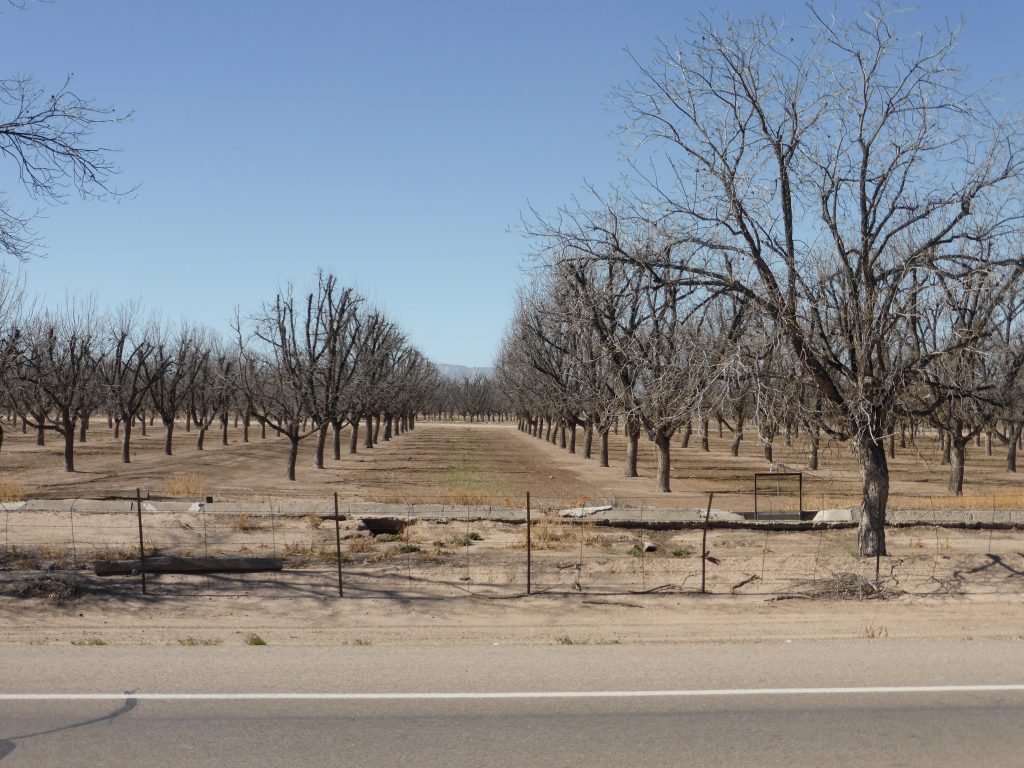
At one point we saw what we thought was a cycle tourer in the distance, but as we got closer it was clear this was not our usual encounter. Pushing along his bike on the wrong side of the road was a man with shoulder length grey hair and a bike piled sky high with assorted items, including at least six gallon-sized bottles, a sleeping bag, a football, various children’s head visors, a spare tyre, blankets and bags full of other assorted items which couldn’t be seen.
“We reckoned it would take him at least ten days to get there. Bizarrely he seemed to have a new tyre wrapped in canvas on the bike of his bike”.
It was a miracle that the wheels and frame hadn’t collapsed under the weight. It was quite evident he lived on the road and he said very little except to mention he was pushing his bike as the sidewall of his back tyre had cracked. His plan was to go to Van Horn to get it fixed or replaced. Since this was over 80 miles away, we reckoned it would take him at least ten days to get there. Bizarrely he seemed to have a new tyre wrapped in canvas on the bike of his bike.
We warned him that Van Horn didn’t have much to offer, but did have various car repair businesses, but he explained he had been there before three years ago and didn’t seem the least bit concerned about his predicament. We could have fixed a puncture (although it would probably have taken an hour to unload the bike) but not having a spare to offer him of the right size we said farewell and off he went.
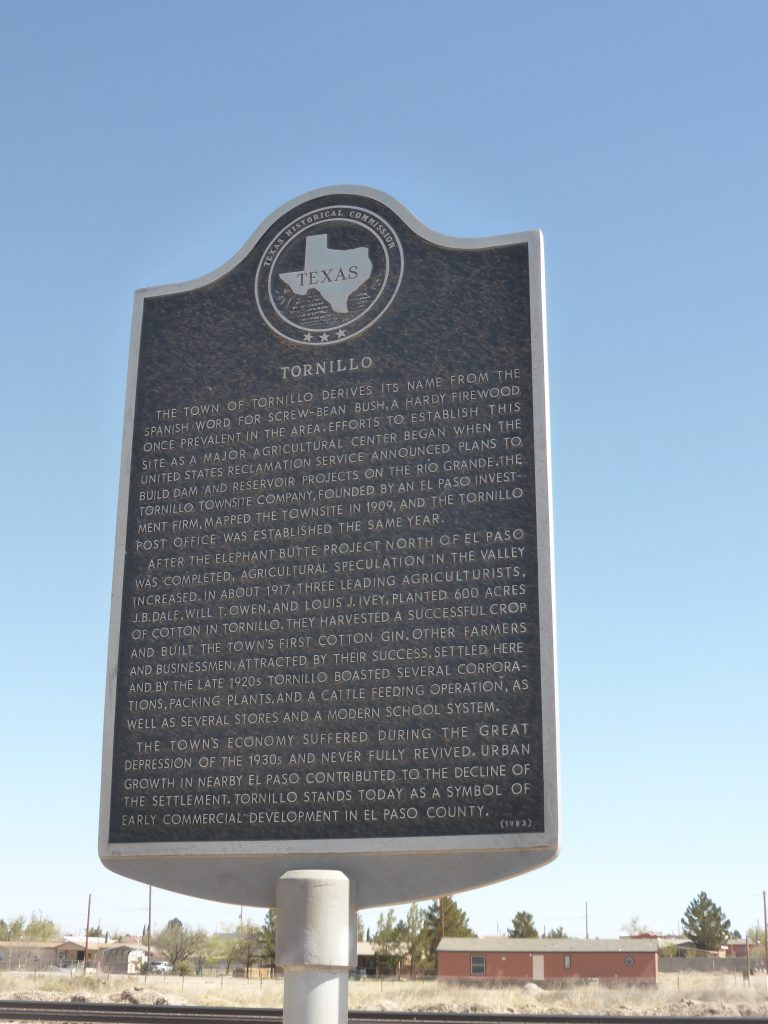
Tornillo was the next place we fought to get to, ever hopeful for a coffee. Zip. Nada. Zilch. The town had once been the centre of the local cotton trade, but there was no sign of this prosperity now. A lot of the single storey adobe shacks that lined the road through were in need of obvious repairs that they were probably never going to get. Even the gas station was on its last legs, with empty shelves and a not too helpful assistant who seemed to be presiding over what looked like a closing down operation.
Tornillo is infamous as being home to the tent city built in June 2018 by the Trump administration to house child migrants. Nearly 6,200 minors went through the facility in the seven months it operated before being closed in January 2019. The Tornillo Tent City attracted widespread criticsim, including from Texas State Senator José Rodríguez who called the children’s treatment “immoral and inhumane”.
Everything looked more Mexican as ploughed on … bodegas, cantinas and wares for sale hanging on houses’ wire link fences. It felt like we must have accidentally crossed the border. By the time we reached Fabens we were finding it hard to believe we were still in the U.S.
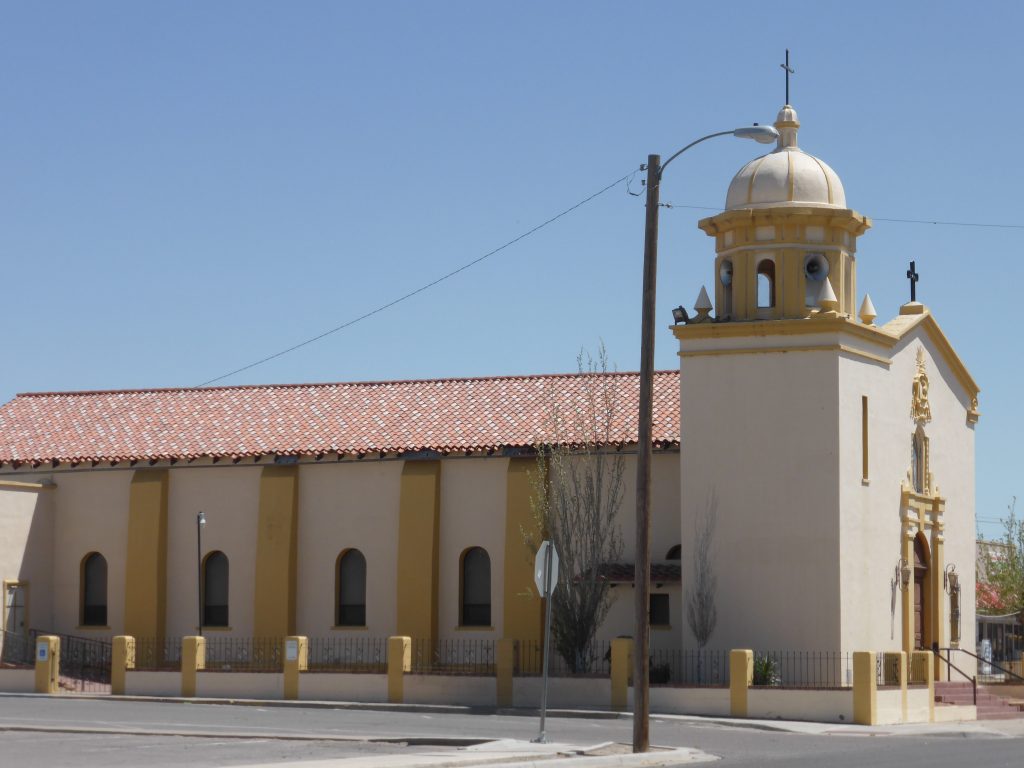
Behind a barred door in a nondescript building on the through-road we found a small family run Mexican cantina and although everyone looked a little bemused to see two exhausted Lycra clad Englishmen waddle in, we were made to feel welcome and quickly fed tortillas to dip in red and green chilli sauces which promptly blew both our heads off.
Many people in this area, including the woman who came to serve us, speak little English, which further adds to the feeling that you’ve crossed the border to another country. Spotting the language barrier two young boys came to take over from their mum, only to be swiftly brushed aside by a young woman who we guessed must be their older sister.
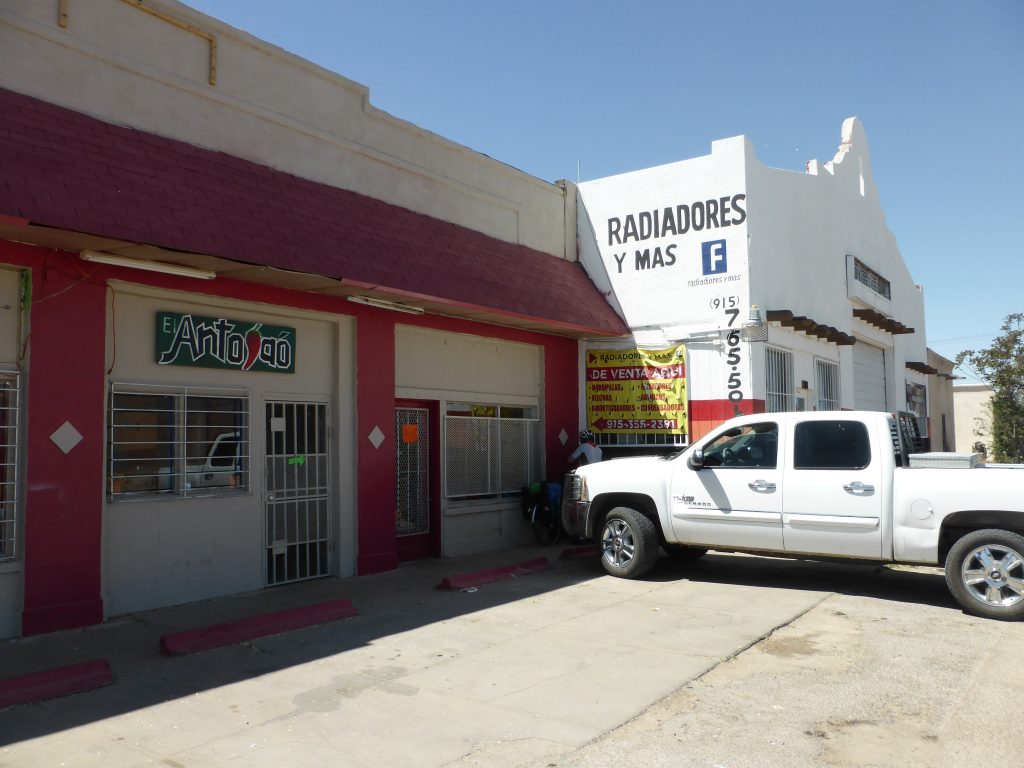
She was dressed in a combat top and with stripes of black paint on both her cheeks. It turned out this wasn’t her normal waitress attire – she had been taking part in some kind of cheerleader/military event at school that morning and hadn’t yet changed. The food – burritos, Mexican omelette, hash browns and rice and beans was excellent as was the mango juice which did much to quell the fires from the chillies which were still blazing on our tongues.
As we got our our bikes ready to take on the headwind once more, an eastbound tourer shot past at breakneck speed, making no attempt to stop. Earlier an older couple had also blasted past us with a quick hello and a fast wave of the hand. You couldn’t blame them for not stopping. Many of those travelling east we’d spoken to had told of days on end battling against the wind as well as losing time because of snow. Now they were making hay while the sun shone. Meanwhile we were maxing out at about 6mph. El Paso still seemed like a lifetime away.
Coming out of Fabens it didn’t take long for me to fall behind Terry and I soon found myself being chased by dogs. The first, a small black dog, was keeping up the chase beside my right foot, until I firmly told it to “go away” then a short time afterwards two large sandy coloured dogs darted from a property on my left and straight onto the road. One looked reasonably friendly, but the second was much more aggressive and was bearing its teeth.
“It was exactly the same scenario as the TransAm – it seems dogs can’t smell fear – but perhaps they can working out who is carrying the trail mix”!
Already mightily pissed off and exhausted from battling the incessant wind, this would-be assassin caught the full fury of my anger as I screamed “BACK DOWN!!” as loudly and aggressively as possible, while putting a spurt on and attempting to keep control of the pedals. Amazingly it worked and they both stopped their attentions immediately. Doggonit!
Catching up with Terry I discovered the hounds hadn’t even batted an eyelid when he went past. It was exactly the same scenario as the TransAm – it seems dogs can’t smell fear – but perhaps they can working out who is carrying the trail mix!
I’d been convinced after lunch that the wind would have turned – it had, but only to an even nastier disposition – hotter and stronger! Following the ACA maps we turned onto North Loop Drive, which took us off the main road. But going through yet more pecan plantations this route was completely exposed with no shade or shelter from the blast of the hot hairdryer wind.
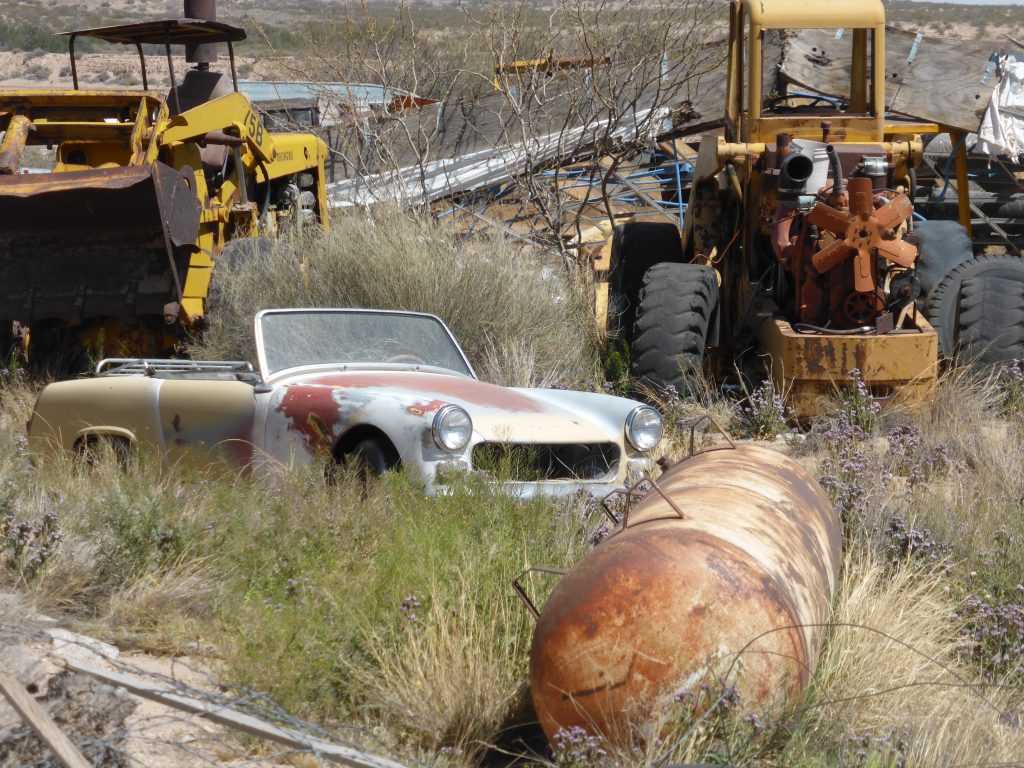
So at the next junction we decided to head back down to the main road – at least the buildings and trees would provide some shade. It turned out to be a big mistake. The two lane road through Fabens had now morphed into a four-laner with much more traffic. Soon the shoulder disappeared and we were left jostling for space at the edge of a dual carriageway while wobbling in the turbulent air.
Stopping for coffee at a Mexican fast food restaurant we headed back onto North Loop Drive which itself was now four lanes wide, but at least there was a wide shoulder where we could wobble along slowly in relative safety. It would also take us deep into the suburbs of El Paso.

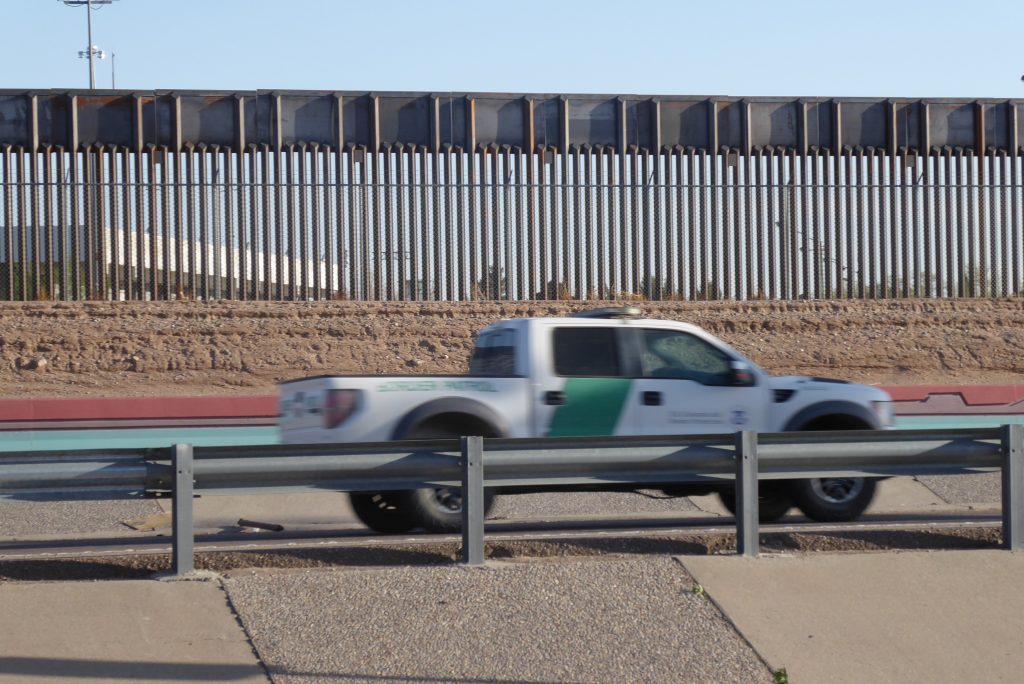
At one point a massive Winnebago went past, towing a large trailer which had a golf buggy in it. We’d seen a few huge rigs like this – RVs the size of coaches, towing large cars which in turn were towing golf buggies. The reason? So when you park up your massive Winnebago you can then hop into the buggy to get around the campsite. These guys really don’t want to walk anywhere.
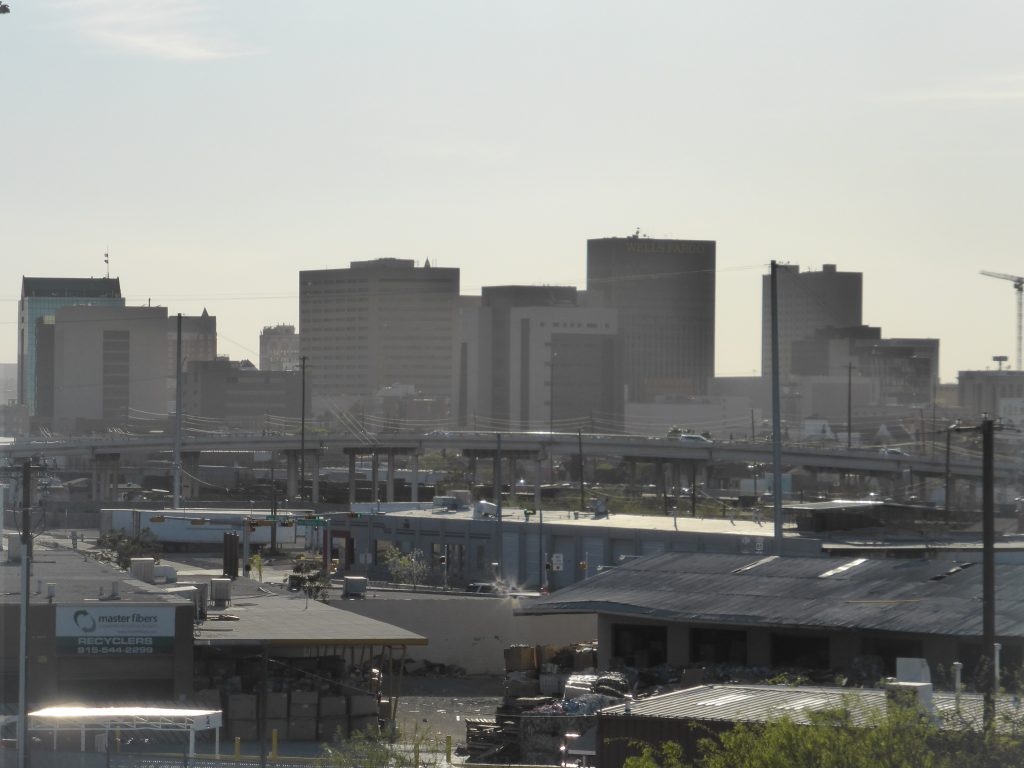
We eventually reached the El Paso city limits, although downtown and our hotel were still 15 miles further on. We plodded through the suburbs, down strips of retail, past numerous garages and workshops and eventually found ourself cycling almost beside the wall that divides El Paso and its neighbouring Mexican city of Ciudad Juarez. Crossing a flyover and heading into downtown we eventually arrived at our hotel at around six o’clock – 58 miles done in a journey which had taken just short of seven hours of cycling at an average speed of 8.4mph.
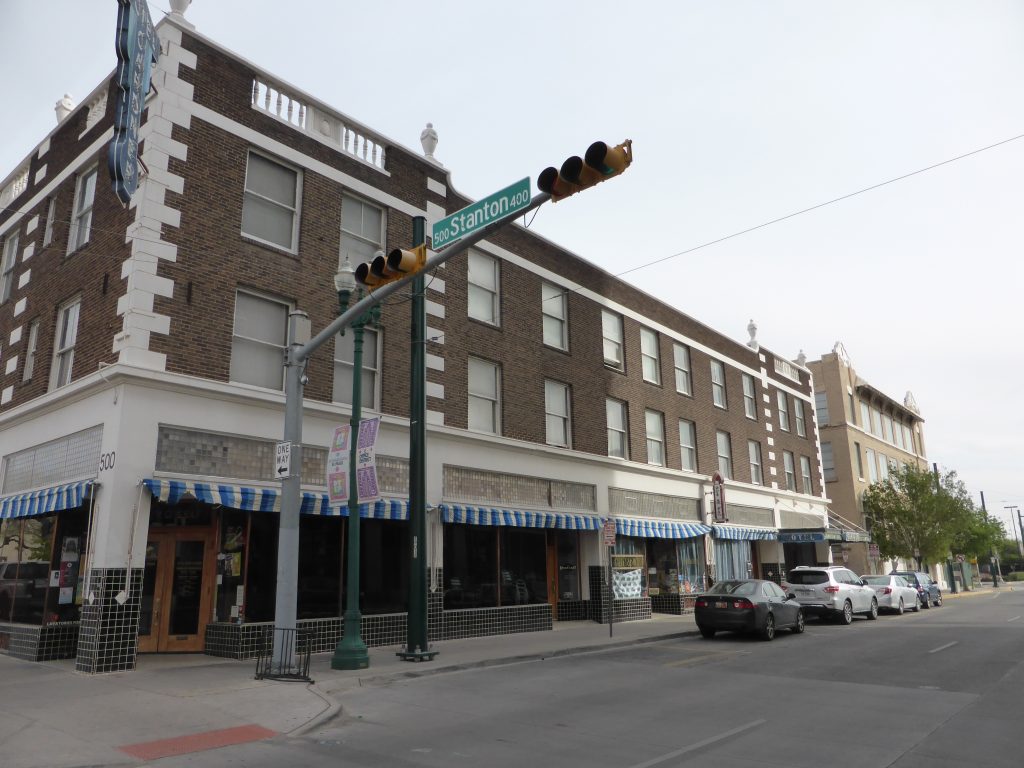
The Gardner on East Franklin Avenue, is the oldest continually operating hotel in El Pasos, first opening in 1922. The period foyer, decked out with vintage furniture, overhead fans and even a wooden telephone kiosk, oozes character and a marble staircases leads up to the rooms. Among those who have walked those steps were bank robber John Dillinger and two members of his gang who checked into the Gardner while on the run. American novelist and Academy Award winner Cormac McCarthy, famous for novels including ‘No Country for Old Men’ and ‘The Road’ used to stay at the hotel while writing his books.
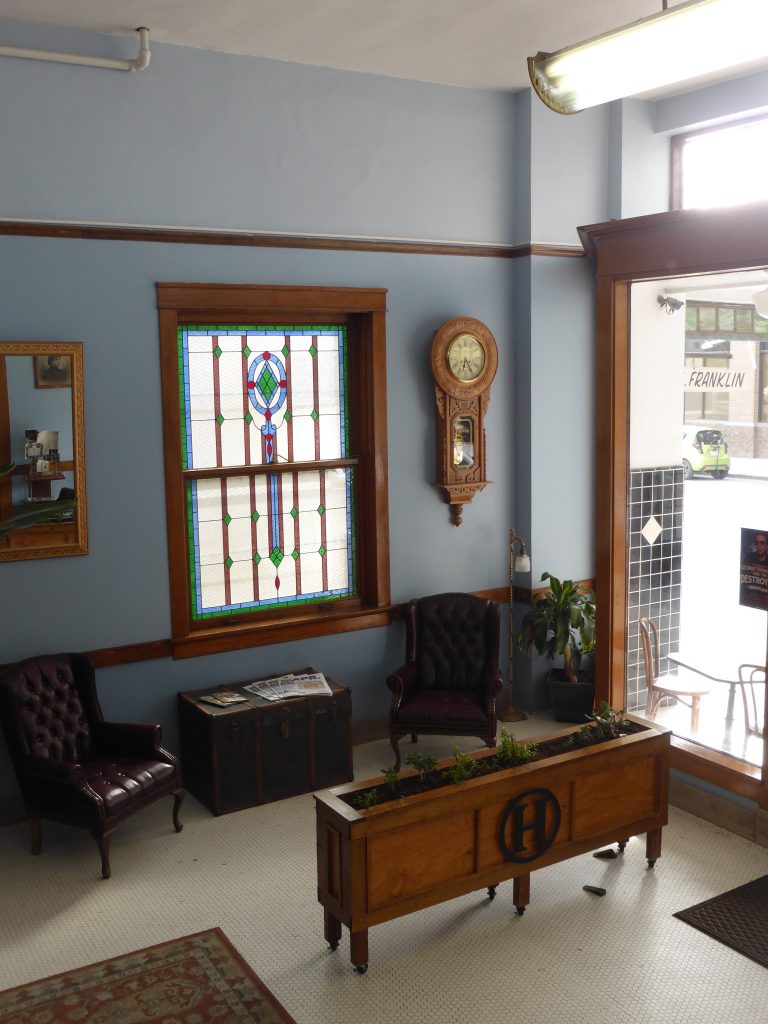
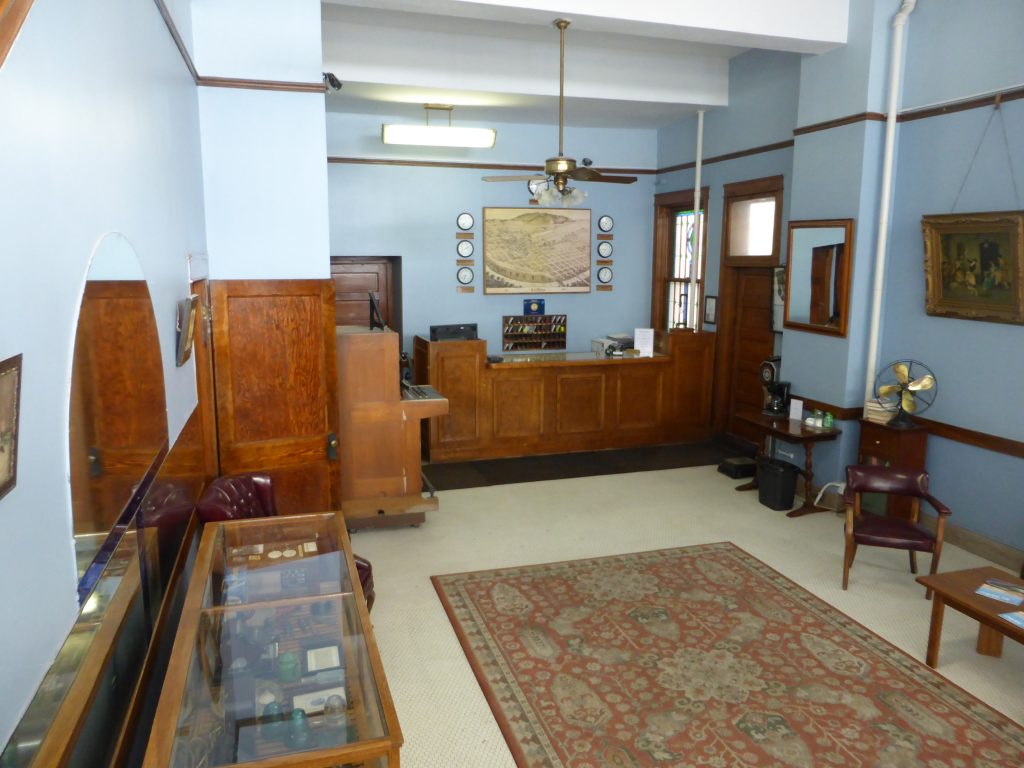
Another original feature is the elevator, so old in fact that it wasn’t working so we carried our bikes upstairs. There was no air conditioning either with the old hotel using a system called evaporative cooling with the rooms and corridors connecting by a venting system to channel air around the building. It seemed to work pretty well.
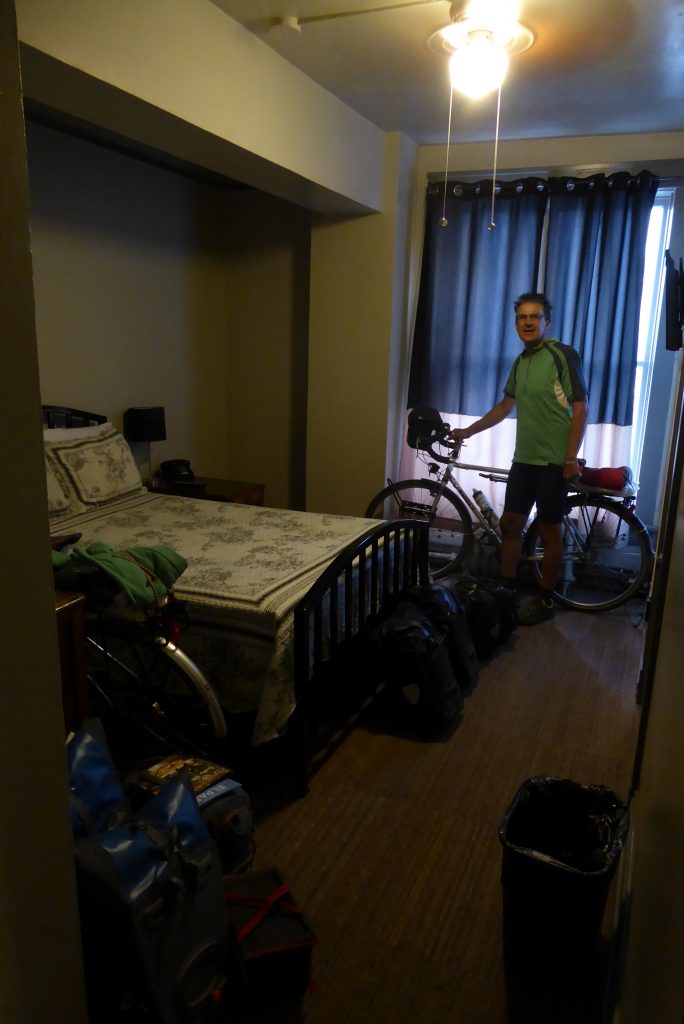
Within seconds we’d transformed our very pleasant room into a jumble sale of bikes, lycra and assorted paraphernalia dug from the depths of our panniers. We took a quick shower and then went next door to the Pizza Joint for dinner. One enormous veggie pizza wasn’t enough, so we ordered the same again … we were ravenous!
“Local politician Beto O’Rourke would be holding a rally to launch his bid to become the Democratic nomination for the 2020 Presidential race”.
A walk around the city demonstrated we’d found the perfect place to stay – and at the right time. In the middle of downtown the roads had been cordoned off in preparation for a cycling criterium which was taking place the next day. We got chatting to some of the organisers including two women from a local bike shop, The Crazy Cat Cyclery, about their dream to see cycling take centre stage in El Paso.
We also discovered that the following morning local politician Beto O’Rourke would be holding a rally to launch his bid to become the Democratic nomination for the 2020 Presidential race.
After spending an hour or so admiring the local architecture – and with craned necks from looking skywards at the tall buildings – we ended the evening sitting in the lounge of a very expensive modern hotel in downtown sipping lattes and looking forward to a zero day off the bike tomorrow. Then the waiter came across and said we could have the coffees for free – apparently they weren’t quite as perfectly presented as they should have been!
We liked El Paso. A lot.
Today’s miles: 58.26
Miles since Anastasia State Park: 2083.86
